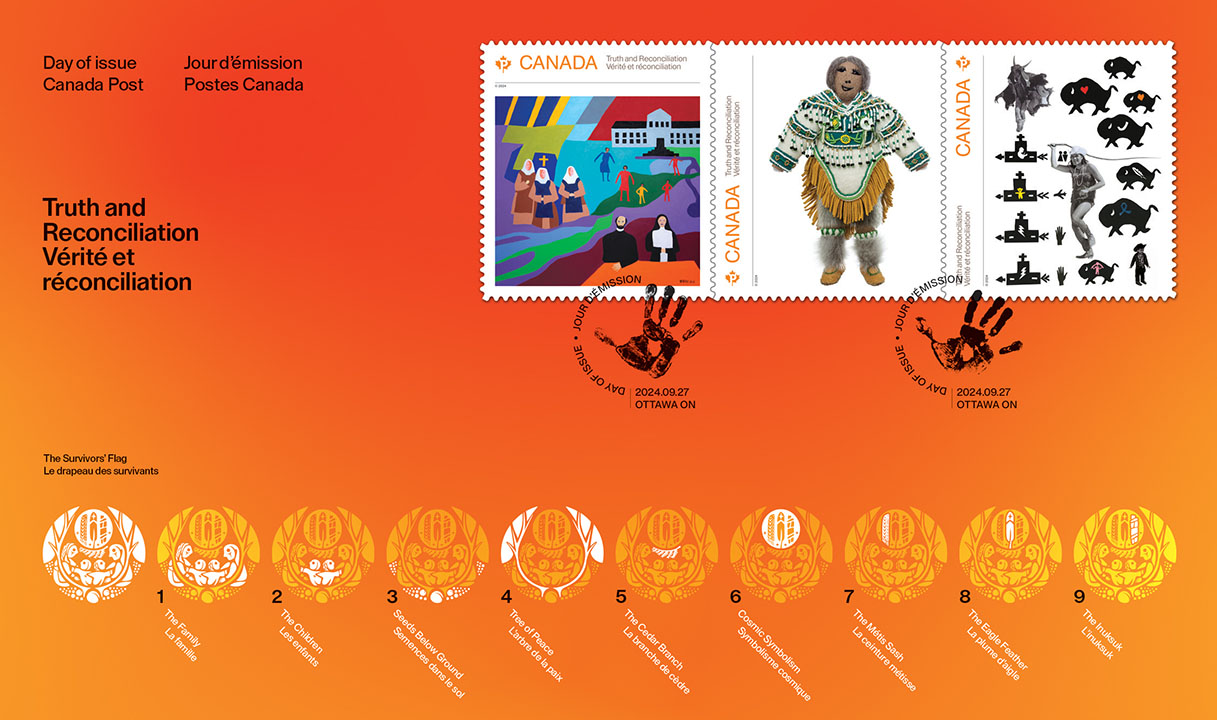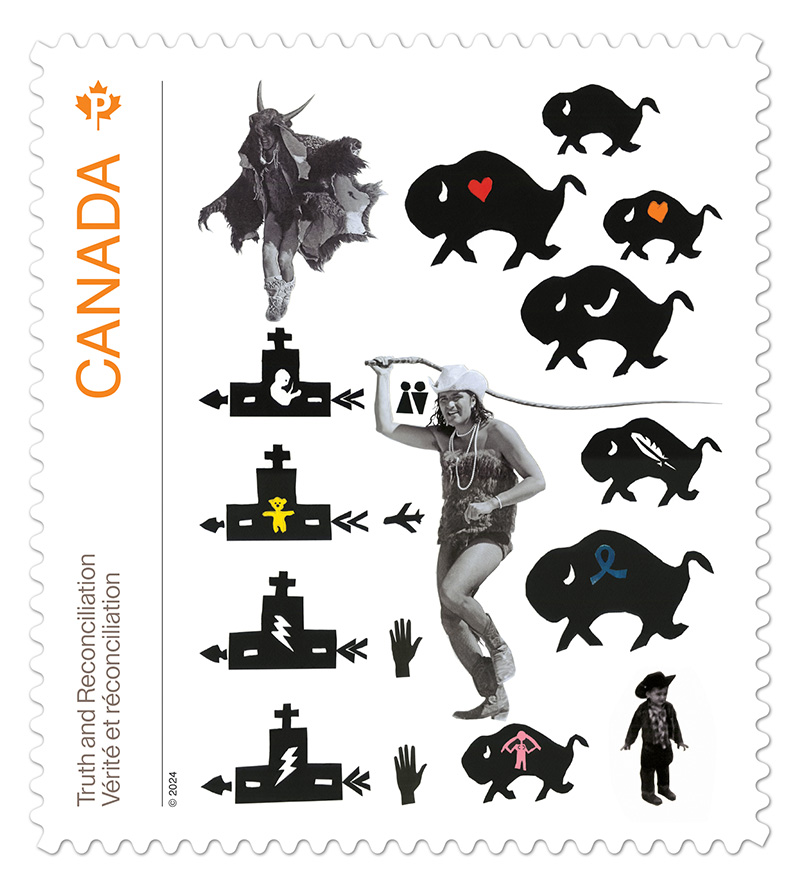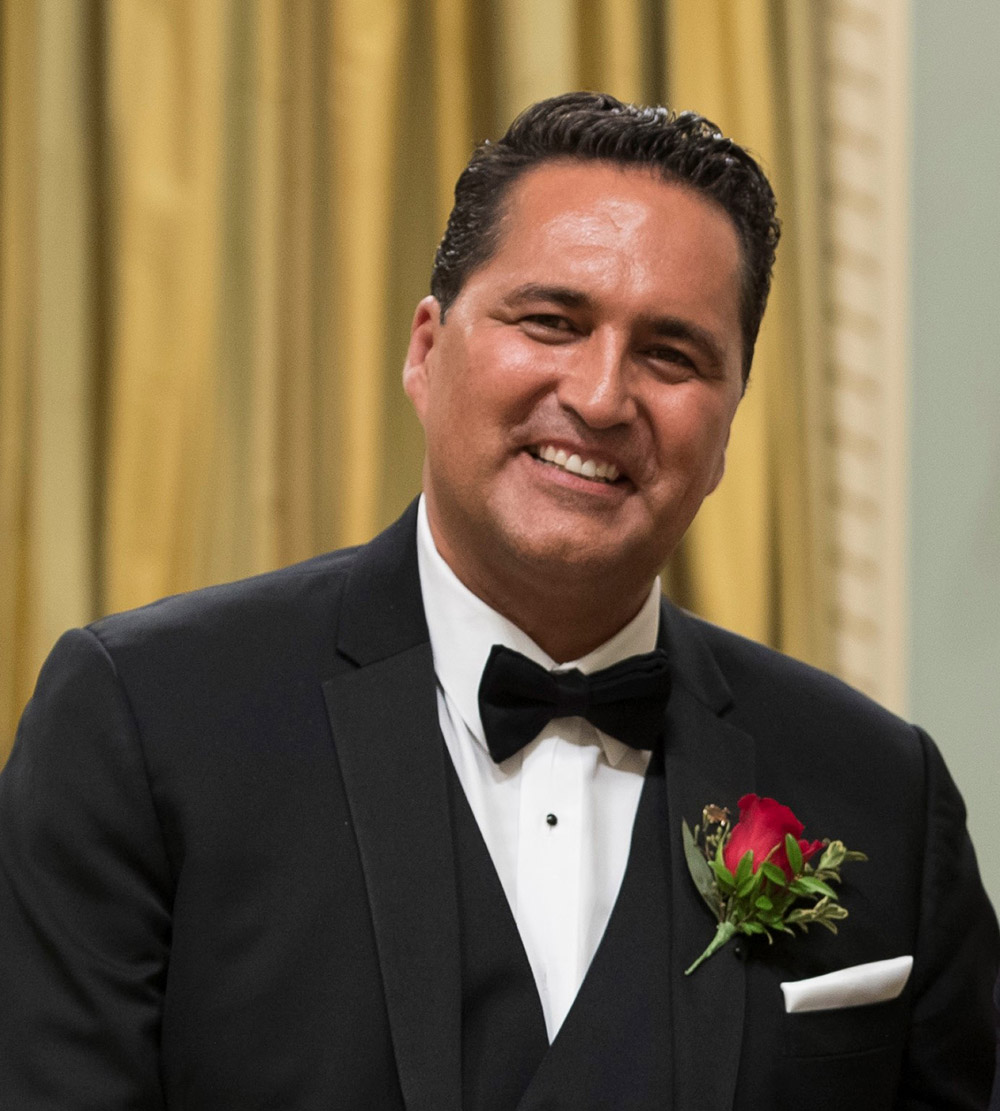
USask alum’s art part of Truth and Reconciliation stamp series
Residential school survivor and acclaimed artist Adrian Stimson (MFA’06) has helped create a powerful stamp series to commemorate the National Day for Truth and Reconciliation.
By James ShewagaThe 2006 Master of Fine Arts program graduate at the University of Saskatchewan (USask) was one of three residential school survivors commissioned to design the artwork for the third year of Canada Post’s Truth and Reconciliation stamp series booklet, which will be available at postal outlets across the country and on canadapost.ca on Friday, Sept. 27.
Stimson is honoured to have helped put a personal stamp on this important project in advance of the National Day for Truth and Reconciliation on Monday, Sept. 30.

“I believe it is very important,” Stimson said from France, currently working a new project for 2027. “Many Canadians and the world still don’t know or understand this history. The stamp – albeit little – carries whole histories, histories that can be shared in a big way.”
The Canada Post stamp booklet is designed to reflect the history and legacy of residential schools, through the eyes of the survivors. Canada Post stated that the stamp images “shed light on the history and legacy of Canada’s residential school system, with artwork expressing personal experience, resilience, Indigenous culture, and hope for a better future for all children.”
Stimson is grateful for the guidance and knowledge of the Survivor’s Circle of the National Centre for Truth and Reconciliation, whose members selected Stimson and fellow artists Robert Burke and Helen Iguptak, and worked with them to help shape the important project. Canada Post noted the partnership ensures the voices and perspectives of survivors remain central to the stamp creation process.
“I am eternally grateful to the Survivor’s Circle for their guidance and counsel,” Stimson told USask’s On Campus News. “They were kind and generous during our meetings. Our common experiences created a space where sharing the trauma of Residential Schools was easily shared, understood and ultimately spoke to the healing process. What an honour.”
Stimson is a survivor of three residential schools, including Gordon’s Indian Residential School in Punnichy, Sask., the last federally funded residential school in the country. The new Canada Post series draws on the history, research and experiences of residential school survivors, with the stamp booklet cover featuring the Survivors’ Flag, and the child’s handprint, a symbol of the many children who were forcibly taken from their homes with many never returning home.

Stimson’s stamp artwork incorporates images described as a hybridization of popularized conceptions of the Two-Spirit being, the shaman, the cowboy and “the Indian.” Stimson’s stamp includes images of seven Bison – symbolizing the seven generations required in the process of healing and reconciliation – as well as a picture of Stimson as a child, and recurring performance art personas Buffalo Boy and The Shaman Exterminator. The work includes a feather representing residential school survivors “who didn’t have a voice, who died and lived without telling their stories,” Stimson told Canada Post.
A Two-Spirit member of the Siksika (Blackfoot) Nation in Alberta, Stimson is an influential interdisciplinary artist, educator and curator whose art is exhibited in major galleries nationally and internationally, from Remai Modern in Saskatoon to The British Museum in London, England. In 2022, Remai Modern hosted the first survey of Stimson’s work, titled Maanipokaa’iini, while the British Museum purchased Stimson’s piece titled Event Two in 2015. Among his sculpture work is the Spirit of Alliance monument in Saskatoon’s River Landing, created with fellow artists Jean-Sebastien Gauthier and Ian (Happy) Grove in 2014.
Stimson, who also produces video and creates performance art, was sent to Afghanistan in 2010 as a participant in the Canadian Forces Artist Program, with the resulting exhibitions Holding our Breath and Terms of Engagement displayed in a tour across Canada. In 2023, the Government of Canada also commissioned Team Stimson to design the National Monument to Canada’s Mission in Afghanistan, located in Ottawa.
Stimson was a USask sessional instructor in Performance Art: Theory and Praxis from 2013-2016, and earned the College of Arts and Science Alumni of Influence Award in 2020. Stimson also received the Governor General’s Award in Visual and Media Arts in 2018, as well as the Hnatyshyn Foundation’s REVEAL Indigenous Art Award in 2017, and the Queen Elizabeth II Golden Jubilee Medal in 2003.
Together, we will work towards Truth and Reconciliation. We invite you to join by supporting Indigenous achievement at USask.

